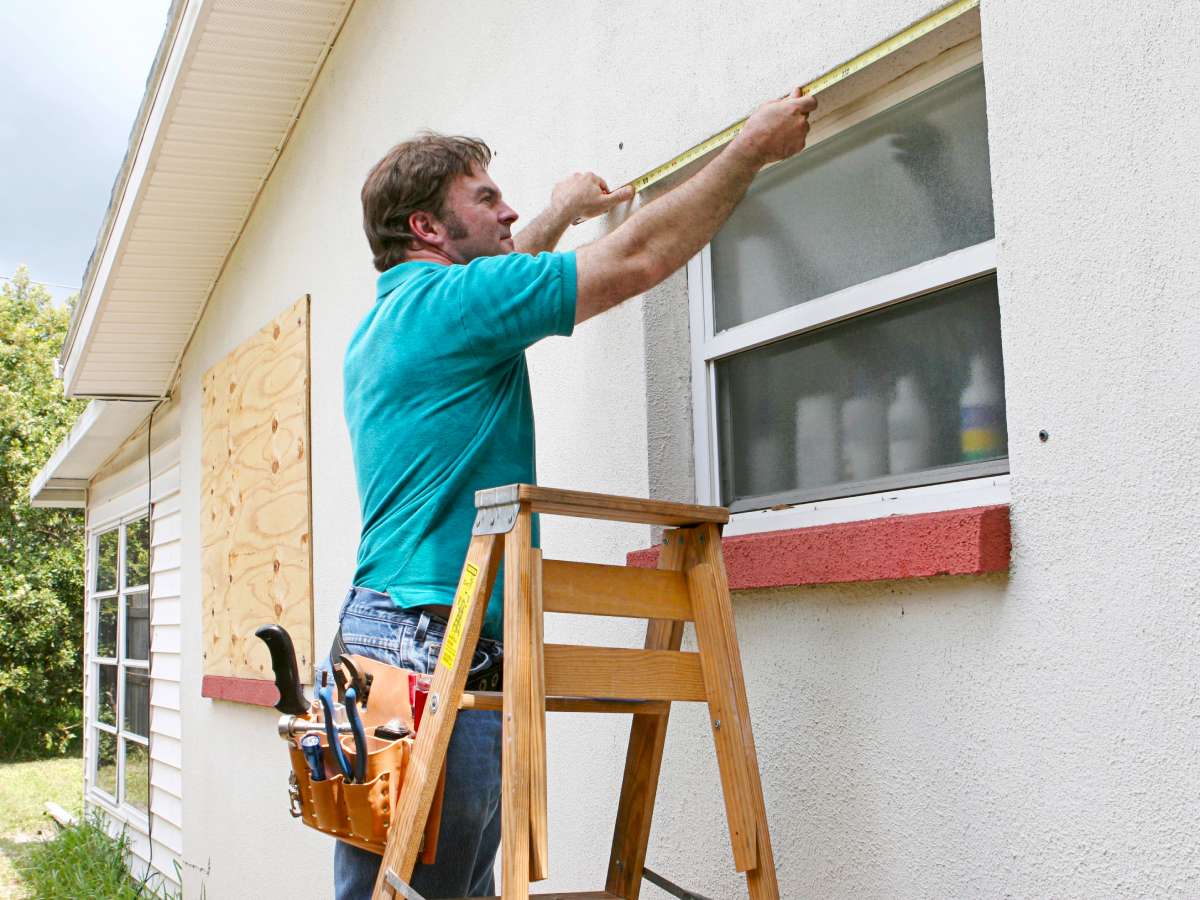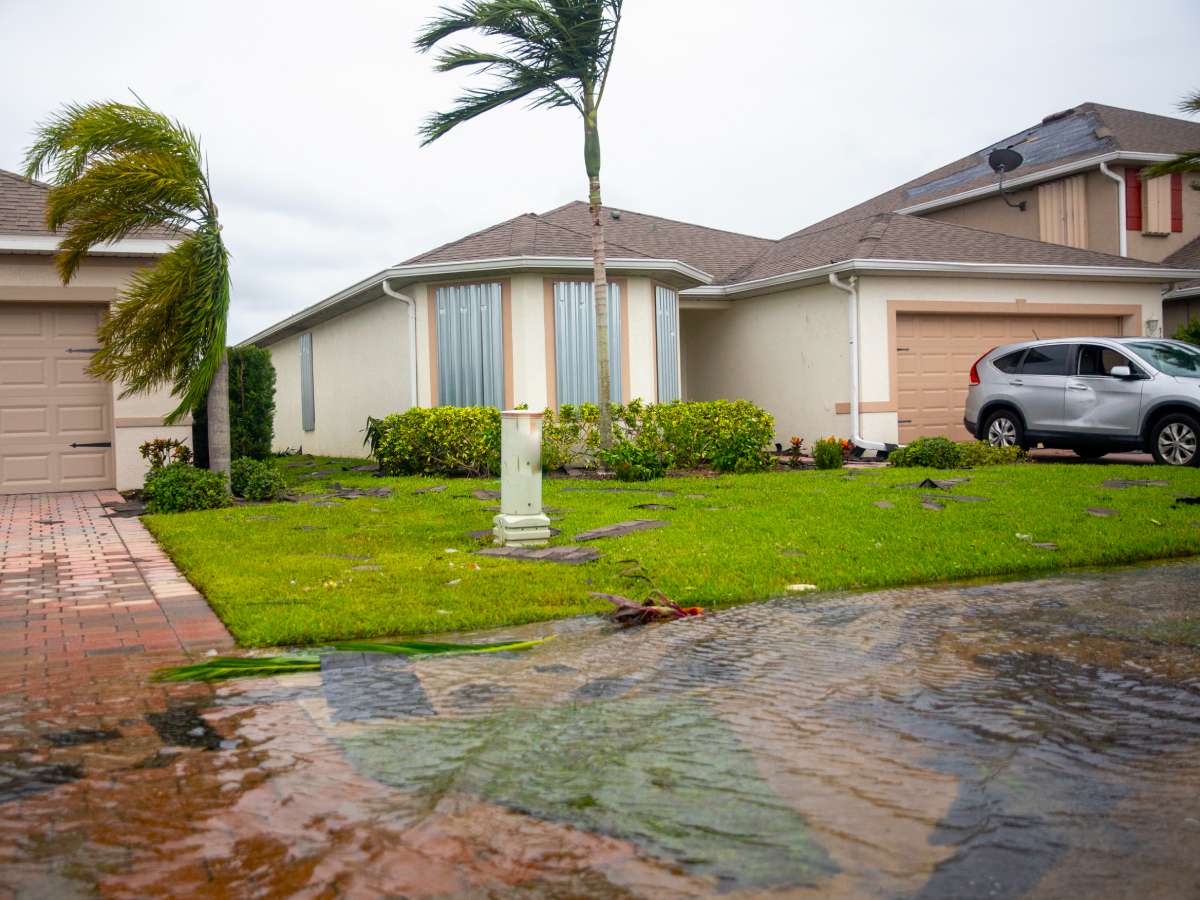I was born and raised on the gulf coast of Florida and have experienced more hurricanes and warnings than I can count.
Trust me when I say… Retrofitting your existing home or building a new one with the aim of resisting hurricane-force winds can be an expensive endeavor — but it’s so worth it!

Homeowners are especially wise to focus on:
- Ways to improve the durability of their windows
- How to protect windows and doorways from high winds and flying debris
The best way to ensure protection against brutally high winds is to install (1) hurricane shutters and (2) hurricane windows.
What’s the difference between hurricane resistant storm shutters & windows VERSUS regular shutters & windows?
That’s what I’m going to talk about today.
In this article, you will learn:
- Why you need strong windows during a hurricane
- Hurricane windows vs. regular windows (the differences)
- What to do if you can’t afford hurricane windows
- Hurricane shutters vs. regular shutters (the differences)
You NEED Strong Windows During A Hurricane
If you’re thinking that the biggest threat to your home will be flying glass and debris if a window should break during a hurricane, consider this:
Hurricane winds tend to lift roofs!
So, if a window in your house gets broken, that creates an entry way for wind under your roof. Which makes it all the easier for a storm to severely damage (or even destroy) your home.
Of course, broken windows do pose a threat because of broken glass and the outdoor debris that a broken window can let in.
However, in terms of structural damage to a house, a broken window is literally an open opportunity for winds to really get to work on destroying your roof and, ultimately, your home.
Hurricane Windows vs. Regular Windows
There are a few key differences between regular windows and hurricane windows:
- Hurricane windows have stronger frames than ordinary windows
- Two layers of glass are found in hurricane-resistant windows
- There’s an impact-resistant layer of film between the layers of glass in hurricane windows
What’s more, you’re providing yourself far more protection with hurricane windows than “only” defense against high winds.
That’s because hurricane windows also:
- Do a better job at keeping out crooks
- Can save money on heating and cooling costs
- Are better for the environment because of their energy efficiency
So, in the end, you’ll find that upgrading your older windows to hurricane windows (or planning to install hurricane windows in a newly constructed house) may be one of the best moves you can make!
IMPORTANT: You cannot use stick-on hurricane film on ordinary windows to replicate the protection of a hurricane window. Why not? Because you’re still lacking the second layer of glass and reinforced frames that hurricane-resistant windows inherently provide.
Can’t Afford Hurricane Windows?… Use Hurricane Shutters
While buying hurricane windows is a wise move, if you can’t afford to install them on your home, you do have another option: Use hurricane shutters!

Hurricane shutters are wind rated to stand up against hurricane-force winds — as seen here.
While some may not be the most attractive way to protect your home, they get the job done. Besides, any hurricane shutter is more attractive and desirable than a demolished home. Right?
Hurricane shutters range in cost and style. Here’s a breakdown of what you’ll be looking to spend for the most-popular types of hurricane shutters:
- Plywood — $2 to $5 per square foot
- Storm panels — $7 to $8 per square foot
- Bahama hurricane shutters — $18 to $30 per square foot
- Colonial hurricane shutters — $18 to $30 per square foot
- Roll-down hurricane shutters — $30 to $55 per square foot
There are advantages and disadvantages to each type of hurricane storm shutter.
Plywood and storm panels may be the cheapest storm shutter options, but they also require a lot of storage and prep time.
When choosing plywood to protect your windows in a hurricane, it’s important to use 5/8-inch thick plywood — NOT thinner, cheaper, or OSB plywood. Here’s why:
Bahama, colonial, and roll-down shutters may be more expensive, but they don’t require storage and don’t require much, if any, prep time to use during a storm.
For what it’s worth, fabric storm panels (also known as wind abatement screens) may not sound tough, but those rated for use as a means of window protection against a hurricane are equal to plywood and similar window coverings.
There are other pros and cons among the different types of storm shutters, too — but most are simply aesthetic issues.
Hurricane Shutters vs. Regular Shutters
Any type of hurricane-designated storm shutter protects better than a regular storm shutter — because it’s been designed (and proven) to stand up against wind and flying debris.
If you have an older home with aging, standard shutters, they’re going to do a far better job of shading you from the sun than keeping high winds and debris from flying into your home during a hurricane.
Beyond the strength of the shutter itself, what is also key is how the shutter is attached to your home…
An older shutter is likely to be installed using regular hinges and screws. A hurricane-rated shutter is anchored to your home using hardware designed to resist against shearing and strong forces.




